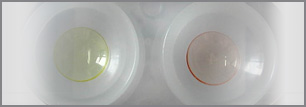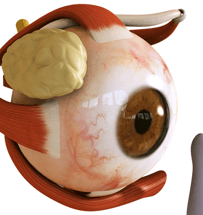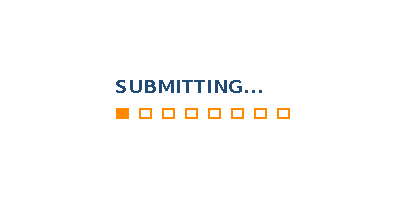

 It is the reduction, modification or elimination of refractive error by the programmed application of contact lenses. A method of improving unaided vision by molding the cornea with contact lenses Orthokeratology uses Contact Lenses to remould the Cornea, to reduce or correct Myopic (short-sighted) and Astigmatic irregular surface) errors of the eye. Modern Orthokeratology involves the combination of reverse geometry designs, high permeability GP materials, and corneal topography to understand the relationship of the shaping lenses to the cornea.
It is the reduction, modification or elimination of refractive error by the programmed application of contact lenses. A method of improving unaided vision by molding the cornea with contact lenses Orthokeratology uses Contact Lenses to remould the Cornea, to reduce or correct Myopic (short-sighted) and Astigmatic irregular surface) errors of the eye. Modern Orthokeratology involves the combination of reverse geometry designs, high permeability GP materials, and corneal topography to understand the relationship of the shaping lenses to the cornea.
Conditions for Oculoplastic Referral
People of any age group can have problems with the areas around the eyes. Some conditions can be present in children, as birth defects, or appear in early childhood. These conditions in children need to be addressed early as they may hamper visual development, and lead to lazy eye (amblyopia).
Injuries, infections or tumours can affect any age group, and need early attention and management. In the elderly weakness of eye and face muscles, lead to watering, drooping of the lids or skin folds that hamper normal function. There are several conditions for which you might be referred to an Oculoplastic surgeon.
Why Orthokeratology ?
It’s a non surgical, FDA approved and most importantly a reversible treatment for myopia reduction. World over myopia is on the rise like 25% in USA90% in China 28% in India. Traditional means of myopia corrections are Spectacle, Contact Lenses, Surgical techniques like RK, PRK, LASIK, etc. Now we have the ability to reduce myopia by CL i.e. Orthokeratology.
What is the mechanism of action of modern Orthokeratology ?
 Immediate change after one-night wear of the shaping lens, with remainder usually occurring over a treatment period of about 10-30 days. Tear film forces cause a compression that results in a redistribution of the epithelial cells (and possibly some stroma) toward the corneal periphery. The corneal epithelial cell layer is redistributed, leading to thinning of the central corneal surface. Thickening of the mid-peripheral cornea, particularly in the stromal layer is also seen.
Immediate change after one-night wear of the shaping lens, with remainder usually occurring over a treatment period of about 10-30 days. Tear film forces cause a compression that results in a redistribution of the epithelial cells (and possibly some stroma) toward the corneal periphery. The corneal epithelial cell layer is redistributed, leading to thinning of the central corneal surface. Thickening of the mid-peripheral cornea, particularly in the stromal layer is also seen.
What are the Advantages of Orthokeratology ?
- Good Vision without Spectacles or Contact Lenses for Most of the day.
- It is Not a Surgical Procedure
- It is Reversible
- It is Non-Invasive
- It is modifiable
- It does not hurt
- Using well established Contact lens fitting means that very few risk fact
Advantage
This can be offered to patients under age 18 too. OrthoK does not cause permanent changes in vision. The procedure is Reversible. Not post-operative pain or recovery period and it is economical.
Disadvantages
- You must be prepared to allow for 4-10 visits over 3-6 months
- Retainer Lens Wear is essential or the Cornea will revert to its original shape
- The degree of success is high but cannot always be guaranteed
- The rate of improvement varies from one person to the next. You must be prepared to follow instructions implicitly for the best results
Instruments Required for Orthokeratology
Topographer, Keratometer, Slit lamp, Auto refractor, universal trial frame, Visual acuity charts, Contrast sensitivity charts (may be helpful to quantify visual acuity). In short a regular eye clinic set up with a topographer should be adequate.
Is Orthokeratology treatment permanent?
No, it is temporary. If you stop wearing the lenses regularly as instructed by your eye care professional, your lens-free vision will decline.
How long does it take to reach good vision?

 Most patients have rapid improvement in the first few days of treatment and have achieved nearly their optimum vision within about 1 month. Most eyes seem to be stable be 3 to 9 months. A small percentage of patients will not improve enough to function under all conditions without additional correction (glasses or daytime contact lens wear).
Most patients have rapid improvement in the first few days of treatment and have achieved nearly their optimum vision within about 1 month. Most eyes seem to be stable be 3 to 9 months. A small percentage of patients will not improve enough to function under all conditions without additional correction (glasses or daytime contact lens wear).
 OUR SPECIALIST
OUR SPECIALIST
 our products
our products

- 3D Custom Made Artificial Eyes
- Keratoconus
- Oculoplasty
- Orthokeratology
- Speciality Contact Lens
- Chandra Scleral Lenses
- Myopia Control
- Gold Contact Lenses
 phone
phone
 email
email

 buy online
buy online
.jpg)
.jpg)






